A couple hours ago in the dark December night, attentive listeners monitoring the live stream from the Orcasound Lab hydrophones heard the sounds of humpback and Bigg’s (transient) killer whales. This is an exciting event in part because Bigg’s orcas are stealth hunters of marine mammals that are very rarely heard in comparison to the chatty, fish-eating southern resident orcas. It’s also exciting because humpback whales have only been heard vocalizing in Haro Strait for the last few years, and we’d not yet heard them this fall since launching the new Orcasound listening app on November 1. Having them both audible at the same time (starting around 7:15 pm on Dec 2, 2018) and in the pitch darkness (full darkness began at 18:10 today) is fascinating, mainly because the Bigg’s whales sometimes hunt humpbacks…
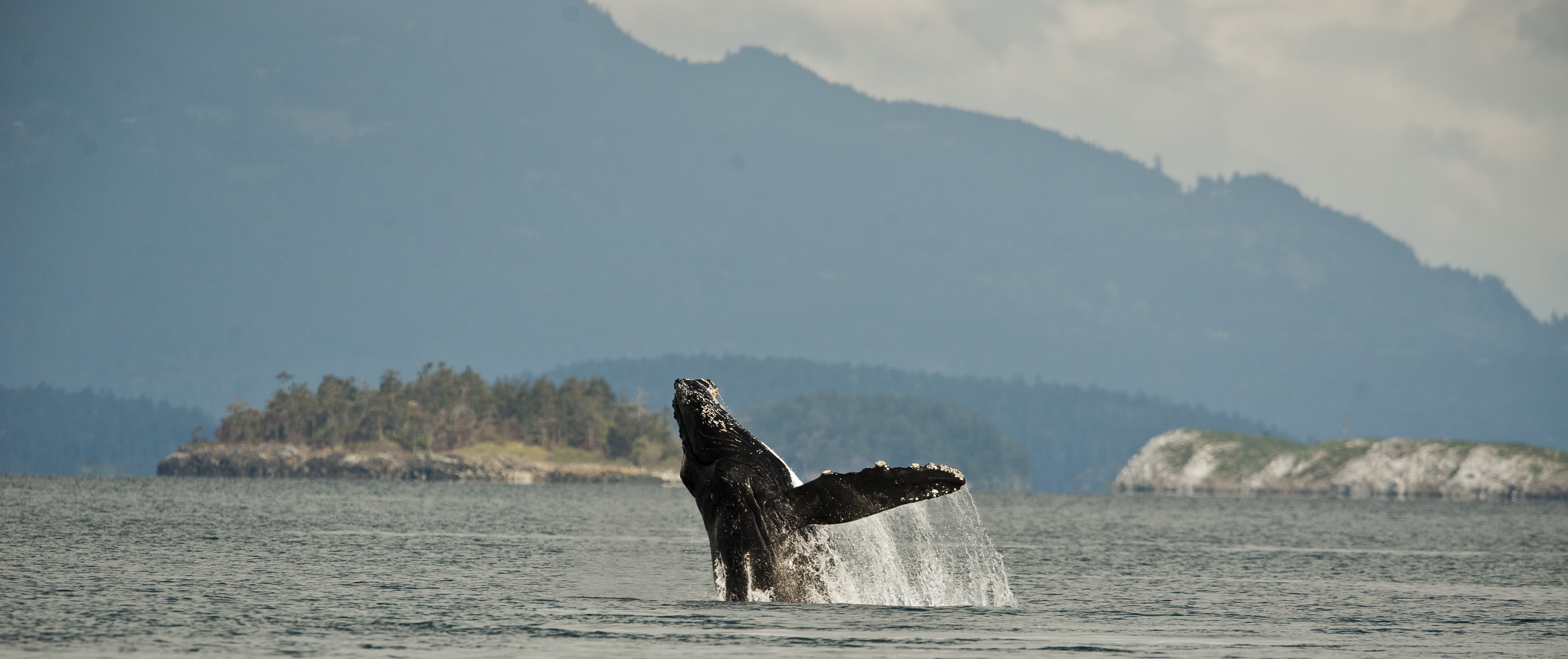
Here’s a 25-second highlight of this rare acoustic encounter between two top predators of the Salish Sea:
A nice aspect of the new Orcasound app is that the hardware at the hydrophone node runs custom open-source software that not only streams the audio in a format that browsers can readily play live, but also archives the data in Amazon’s Simple Storage Service (S3). This means the ocean sound at each of our locations is recorded continuously, 24/7, in an S3 “bucket” and can be easily retrieved for bioacoustic analysis, educational outreach, or simply to share the wonders of the sonic sea.
The relevant bucket tonight was a directory with the UNIX timestamp 1543804333, which translates to a storage folder that was created and began to fill on Sunday, December 2, 2018 at 6:32:13 PM GMT-08:00. That S3 bucket has about an hour of continuous data in it which can be accessed here. If you have an HLS reference player like this one handy, you could paste the URL for that hour of live-streamed data into the player and scrub back to ~46:00 to hear the highlights of tonight’s acoustic performance.
Alternatively, you can join the bioacoustic analysis channel on the Orcasound Slack and learn to use AWS command line interface and a few ffmpeg calls to convert the HTTP Live Streaming (HLS) audio data into a format that can be easily imported into your favorite audio analysis or editing software, like the free, open-source, platform-independent Audacity. Soon this will be even easier; for the nodes that have enough upload bandwidth our software will not only stream the lossy HLS, but also a lossless, compressed version (in FLAC format).
Here’s the code I used (in a Macbook’s terminal):
mkdir 20181202_1920-humpback-biggs_OrcasoundLab
cd 20181202_1920-humpback-biggs_OrcasoundLab/
aws s3 sync s3://streaming-orcasound-net/rpi_orcasound_lab/hls/1543804333 .
printf "file '%s'\n" ./*.ts > mylist.txt
ffmpeg -f concat -safe 0 -i mylist.txt -c copy all.ts
ffmpeg -i all.ts -c:v libx264 -c:a copy -bsf:a aac_adtstoasc output.mp4
ffmpeg -i output.mp4 output.mp3And here’s the resulting (26 Mb) .mp3 file. I imported this file into Audacity and began the process of listening to and labeling the recording.
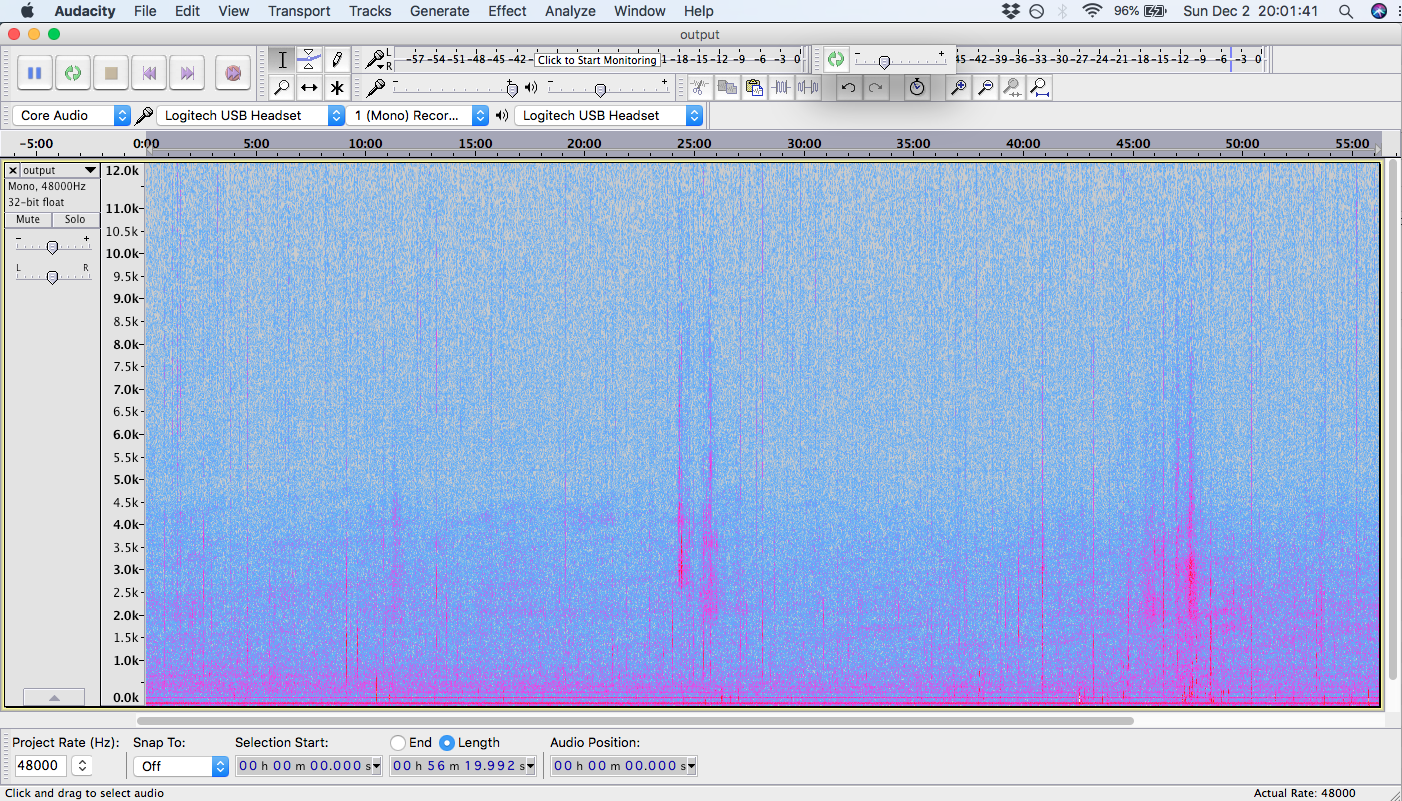
There are faint sounds, possibly from humpback or Bigg’s killer whales in the recording between 36:00 and 50:00 minutes — a 24 minute period that spanned about 19:08-19:32 local time (PST). The period with more obvious calls (strong signal to noise ratio) is minutes 46:30-49:00 (that’s about 2.5 minutes from 19:18:43-19:21:13), and the highlight 25 seconds started at 48:18 (19:20:31). Each of these clips are in this processed Orcasound data directory (in .ogg and .mp3 formats), or you can play them below:
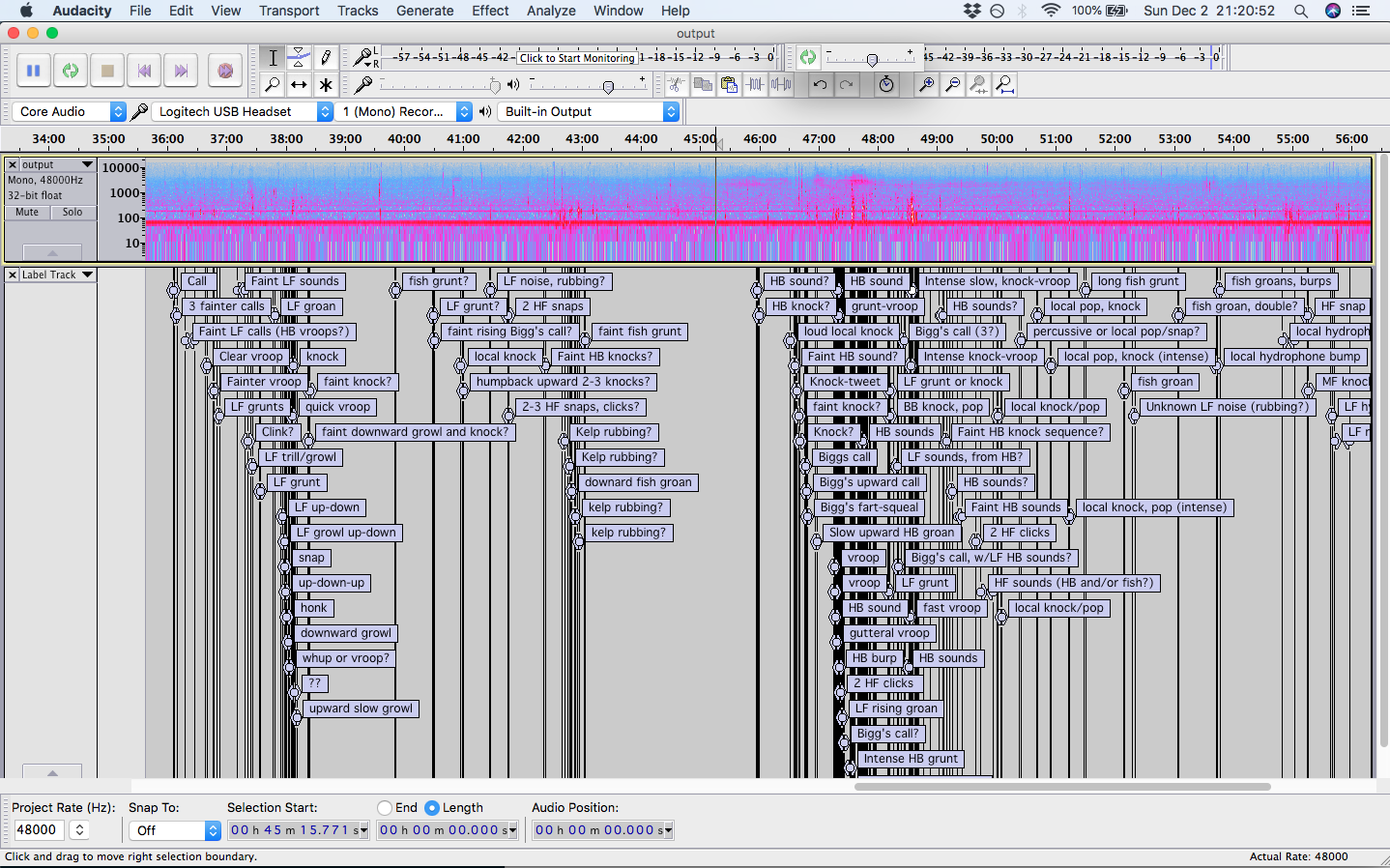
The humpback calls are lower-pitched (most acoustic power between 100-300 Hz) and sound like groans, knocks, grunts, and upward frequency-sweeps called “vroops” or “whups.” Here are a few examples of humpback calls that have been made previously in Haro Strait to get you familiar.
Bigg’s calls are higher-pitched (fundamental frequencies near 500-1,000 Hz) and reminiscent of squeals or mournful humming. This Beam Reach blog post presents an amazing recording made by the U.S. Navy in Dabob Bay of transients vocalizing after a kill. You can familiarize yourself with the many sounds they can make when they aren’t silently hunting by browsing this sampling of Bigg’s killer whale signals (diverse calls, whistles, and percussive sounds) from the Dabob recording.
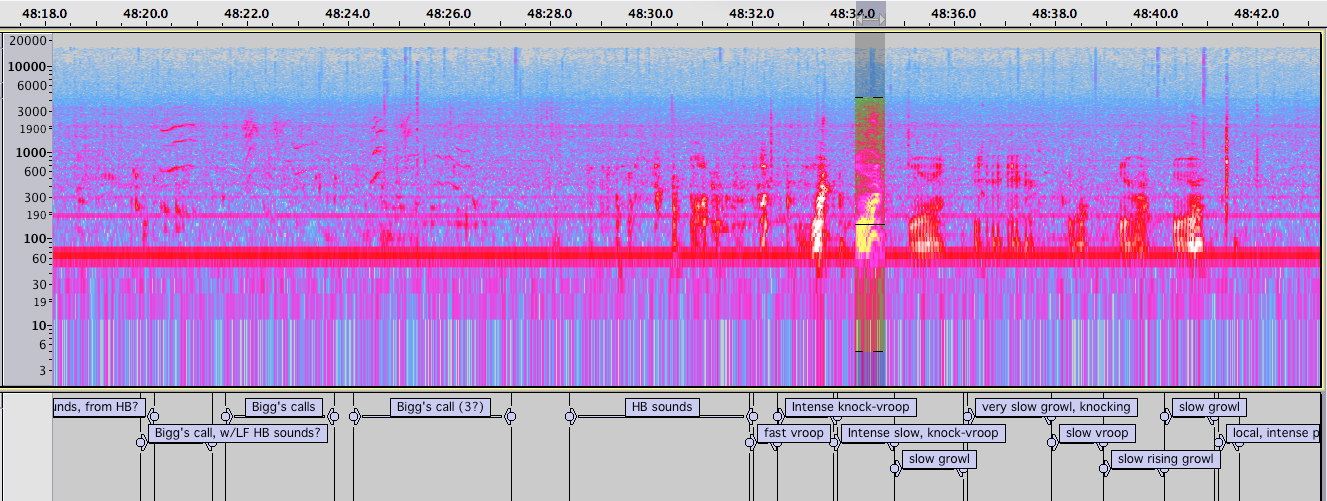
One notable aspect of the sequence of calls captured in this recording is that there are a series of bouts separated by silent periods. There’s a 2.5-minute bout from minutes 36-38:30, silence for ~1 minute, a fainter 2.5-minute bout from ~41-43:30, silence for a few minutes, and then a much stronger 2.5-minute bout from ~46:30-49.
Each of these bouts contains a bunch of humpback sounds and just a few Bigg’s calls. In only one case did I hear them overlap (during the ~10 seconds from 48:17-48:27. Are they taking turns signaling? Are they listening to each other?
We didn’t record any baby humpback whispers, though the intensity of some of the calls suggests the humpback was close enough to our hydrophone that we might have heard a whisper. Perhaps this was a lone humpback, or a couple adults, making sounds that indicated their size and adult status. Based on the rarity of their calls in the recording, it’s likely safe to infer that the Bigg’s killer whales weren’t in mammal-hunting mode. If so, then this may be a rare occasion in which Bigg’s have vocalized in Haro Strait without having previously made a kill. For contrast, you can hear how frequently they vocalize in this blog post about Orcasound lab recordings of Bigg’s in Haro Strait after killing a seal in broad daylight.
After that final bout the signals (mostly humpack-like sounds) fade out over a few minutes and the recording returns to natural background noise for the remainder of the hour. We listened a bit into the next hour until a northbound containership made our efforts futile.
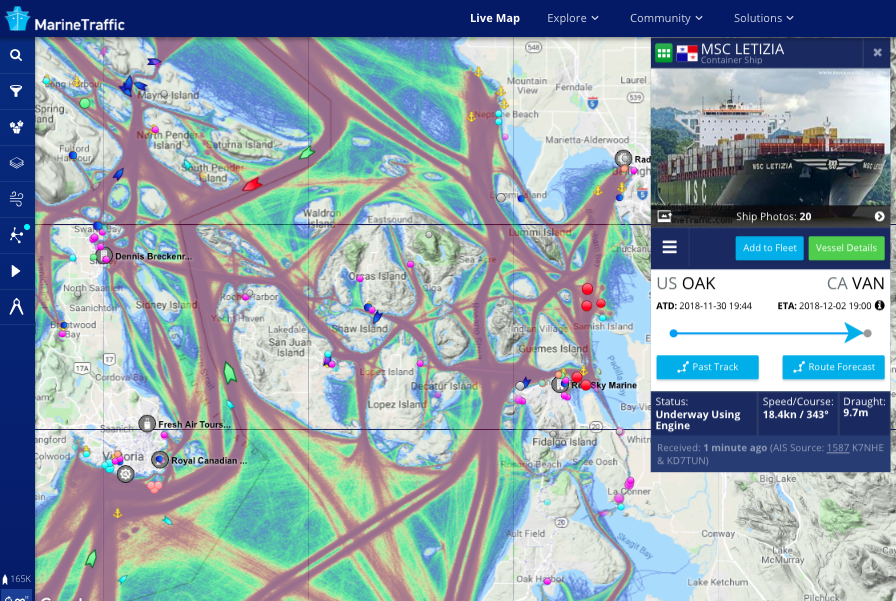
One thought on “Humpback and Bigg’s killer whales serenading in the darkness”